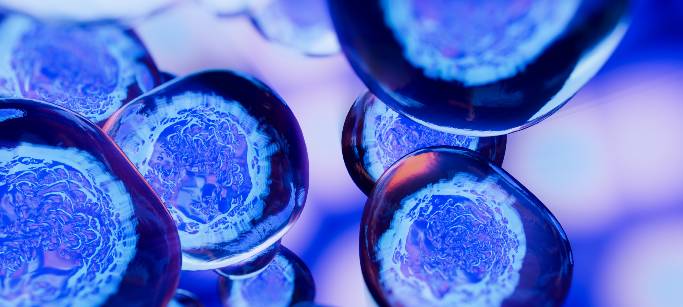Mesenchymal Stem Cell Therapy an Option for Patients With Type 2 Diabetes Complications
Investigators in Ukraine share data on the safety and efficacy of autologous mesenchymal stem cell administration for type 2 diabetes complications under the hypothesis that success is dependent on the administration route and quality of the autologous MSC population.
(Adobe Stock)

According to the World Health Organization, the prevalence of diabetes rose from 108 million in 1980 to 422 million in 2014, and there was a 5% increase in premature death due to diabetes between 2000 and 2016.1 To add to those statistics, the International Diabetes Federation reported in 2021 that approximately 537 million adults are living with the disease, a number that is projected to rise to 643 million by 2030.2
Metabolic syndrome and type 2 diabetes mellitus (DT2) can result from a combination of factors, including obesity, insulin resistance, abnormal cholesterol, and elevated triglyceride levels, among other considerations. The major metabolic changes that trigger DT2 can also lead to the development of non-alcoholic steatohepatitis (NASH), as well as other complications, such as ulcers.
Investigators have seen some promise with human peripheral blood-derived mesenchymal stem cell (MSC) therapy for DT2 complications in the past, but administration of autologous auto-MSCs in patients with DT2 has produced varied results.
Now, investigators in Ukraine are evaluating the safety and efficacy of autologous MSC administration in DT2 under the hypothesis that success is dependent on the administration route and quality of the autologous MSC population. In a late-breaking oral abstract at the American Society of Gene & Cell Therapy 25th Annual Meeting (ASGCT), held in Washington, DC, and virtually May 16-19, 2022,3 presenter Svetlana Gramatyuk reported on the long-term follow-up of patients who received DT2 treatment with an ex vivo gene therapy as part of a multicenter, long-term safety and efficacy follow-up study (NCT04642911).
Under a clinical protocol authorized by the local Ethics Committee of Ukraine Association of Biobank (Ukraine), with a license from the Ministry of Health of Ukraine, investigators collected MSCs separated from peripheral blood of patients with DT2. The study population comprised 96 individuals. Patients with DT2 were included and divided into 2 groups. The first included patients with only DT2 (n = 50). The second included patients with DT2 and a complicated course of NASH (DT2 + NASH) (n = 36). The control group comprised 25 conditionally healthy men and women of the same age.
All patients were randomized 1:1 to the allocations in either group 1 or group 2. For patients in group 1, the stem cells were delivered intravenously for 30 minutes at a delivery rate of 40 mL/hour. Hybrid reconstitution was performed, and investigators employed a fibroblast matrix to close tissue defects. For group 2, delivery was similar, but investigators transplanted stem cells into the muscle tissue along the border of the trophic ulcer at a dose of 5 ml of suspension containing 5.0x105cells per 1 cm2 of wound area.
Efficacy outcome measures included absolute changes in the hemoglobin A1c, fasting blood glucose, and C-poated in 30 DT2 patients.
“DT2 duration directly altered the proliferation rate of auto-MSCs, abrogated the glycolysis and mitochondria respiration of MSCs, and induced the accumulation of mitochondria DNA mutation,” the research team concluded. “In the modern scientific space, various directions have been proposed in the diagnosis of metabolic syndrome and the treatment of D2T.”
Gramatyuk, presenter and president of Ukraine Association of Biobank, urged a team effort in administering this type of therapy.
“Having an interdisciplinary team and having the approach of several doctors for 1 single patient would be the most effective way for this kind of therapy,” she said.
References:
World Health Organization. Diabetes fact sheet. WHO website. Published November 10, 2021. Accessed May 16, 2022. https://www.who.int/news-room/fact-sheets/detail/diabetes
International Diabetes Federation. Diabetes facts & figures. IDF.org website. Updated September 12, 2021. Accessed May 16, 2022. https://idf.org/aboutdiabetes/what-is-diabetes/facts-figures.html
Gramatyuk S, Ivanova J. Long-term Follow-up of subjects with diabetes 2 type treatment with ex vivo gene therapy. Presented at: American Society of Gene & Cell Therapy 25th Annual Meeting; May 16-19, 2022; Washington, DC. Accessed May 16, 2022. https://annualmeeting.asgct.org/global/am22/late-breaking-abstract-publication.aspx